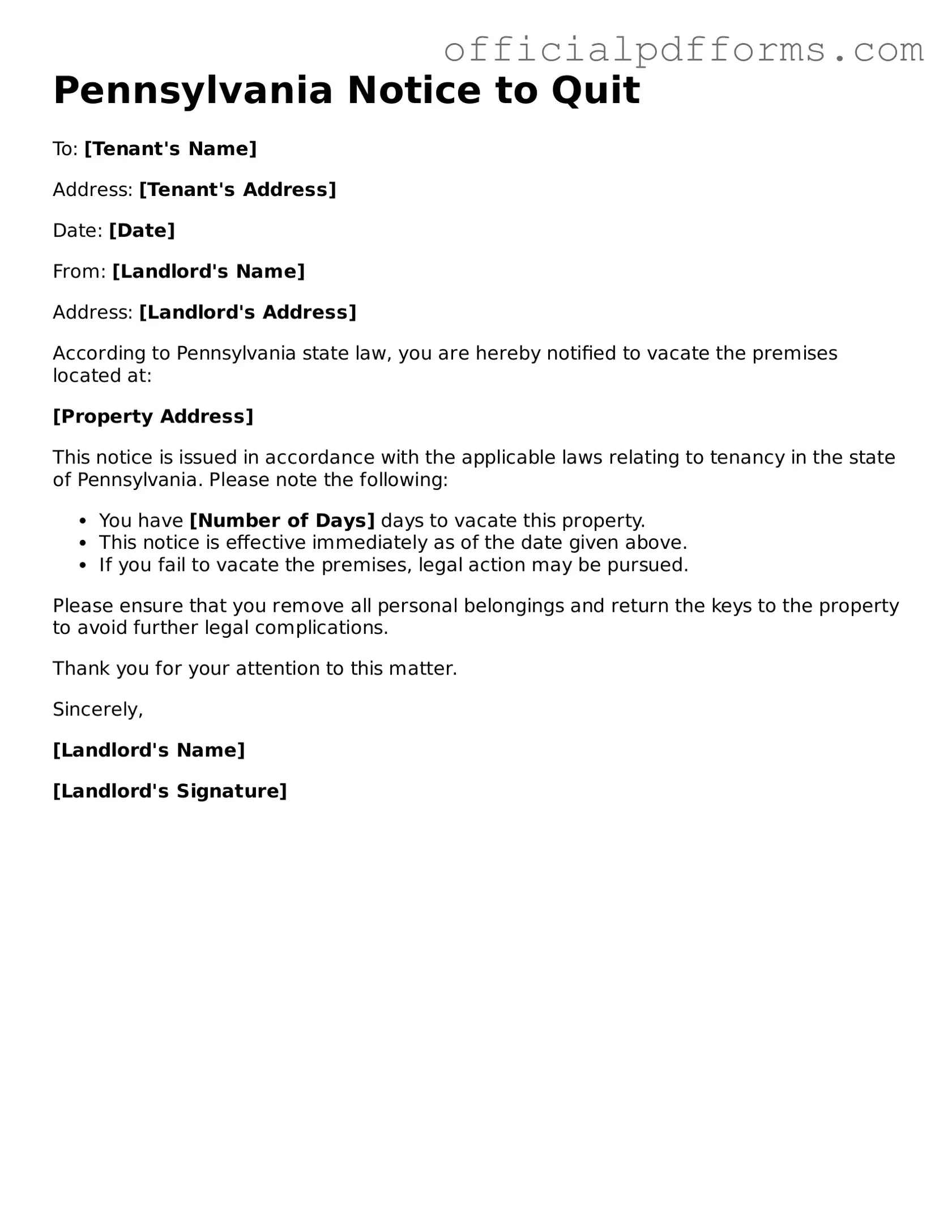The Pennsylvania Notice to Quit form is a legal document used by landlords to notify tenants that they must vacate the rental property. This notice is typically the first step in the eviction process. It informs the tenant of the landlord's intention to terminate the lease agreement, providing them with a specified timeframe to leave the premises.
When should a landlord use a Notice to Quit?
A landlord may use a Notice to Quit in several situations, including:
-
When a tenant fails to pay rent on time.
-
When a tenant violates a term of the lease agreement.
-
When a landlord wishes to terminate a month-to-month rental agreement.
Each of these situations requires different notice periods, so it is essential to understand the specific circumstances before issuing the form.
How much notice must be given in Pennsylvania?
The required notice period can vary based on the reason for the eviction. Generally, landlords must provide:
-
10 days for non-payment of rent.
-
15 days for lease violations.
-
30 days for month-to-month tenancy terminations.
These timeframes are designed to give tenants an opportunity to remedy the situation or prepare to move.
A properly completed Notice to Quit should include:
-
The date the notice is issued.
-
The landlord's name and contact information.
-
The tenant's name and address of the rental property.
-
The reason for the notice.
-
The date by which the tenant must vacate the property.
Providing clear and concise information helps avoid confusion and ensures that the notice is legally valid.
Can a tenant contest a Notice to Quit?
Yes, tenants have the right to contest a Notice to Quit. If they believe the notice is unjust or improperly issued, they can respond to the landlord. This may involve addressing the issue that led to the notice or seeking legal advice. If the situation escalates, the tenant may need to appear in court to present their case.
What happens if a tenant does not comply with the Notice to Quit?
If a tenant does not vacate the property by the specified date in the Notice to Quit, the landlord may proceed with the eviction process. This typically involves filing a complaint in the local court. A judge will then review the case, and if the landlord's claims are valid, an eviction order may be issued.
Is a Notice to Quit the same as an eviction notice?
No, a Notice to Quit is not the same as an eviction notice. The Notice to Quit is a preliminary step that informs the tenant of the landlord's intention to terminate the lease. An eviction notice is issued after the tenant fails to comply with the Notice to Quit and the landlord has taken legal action to evict the tenant.
Landlords can find a Pennsylvania Notice to Quit form online through various legal resources, local court websites, or through legal aid organizations. It is important to ensure that the form complies with Pennsylvania laws and is tailored to the specific situation at hand.
